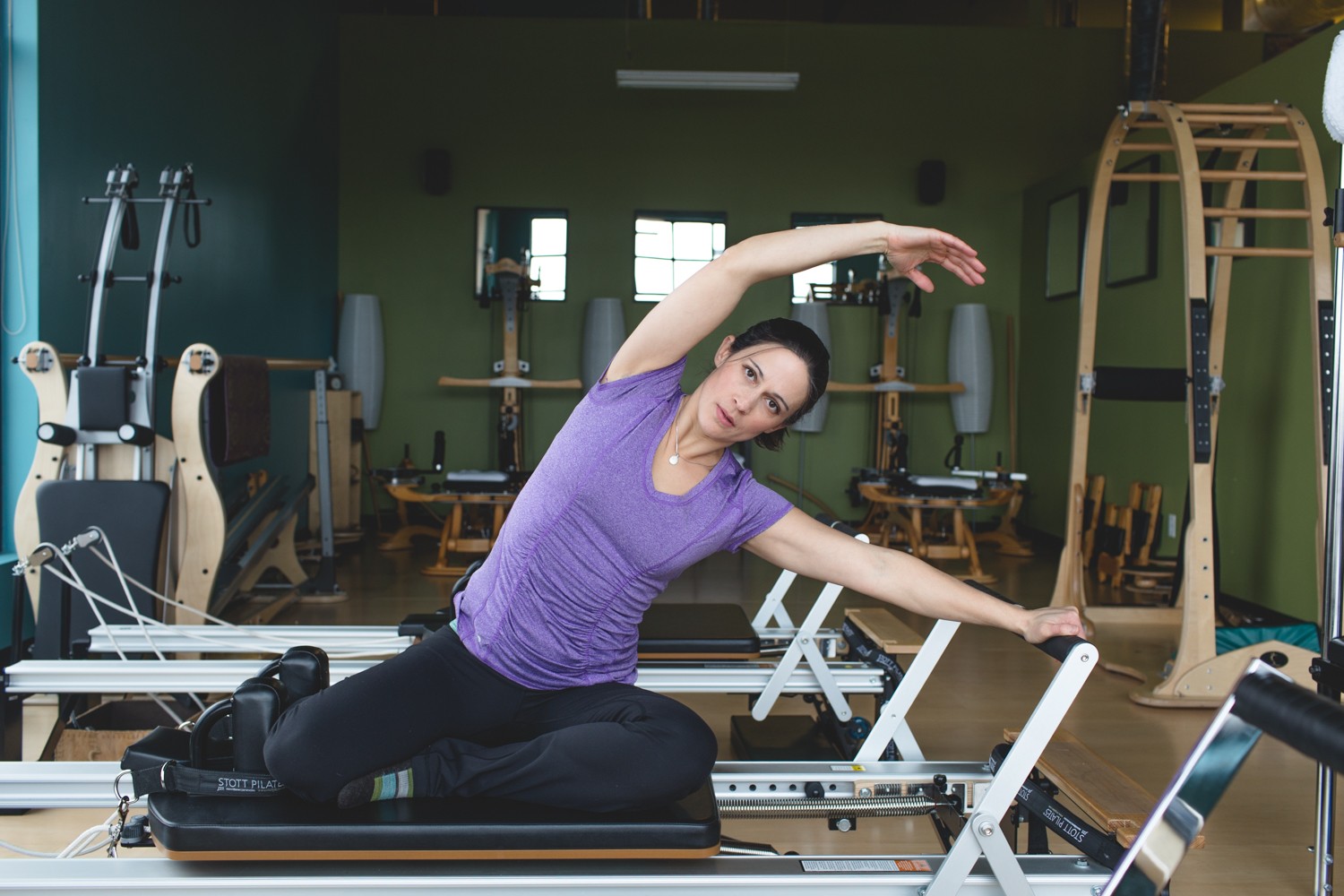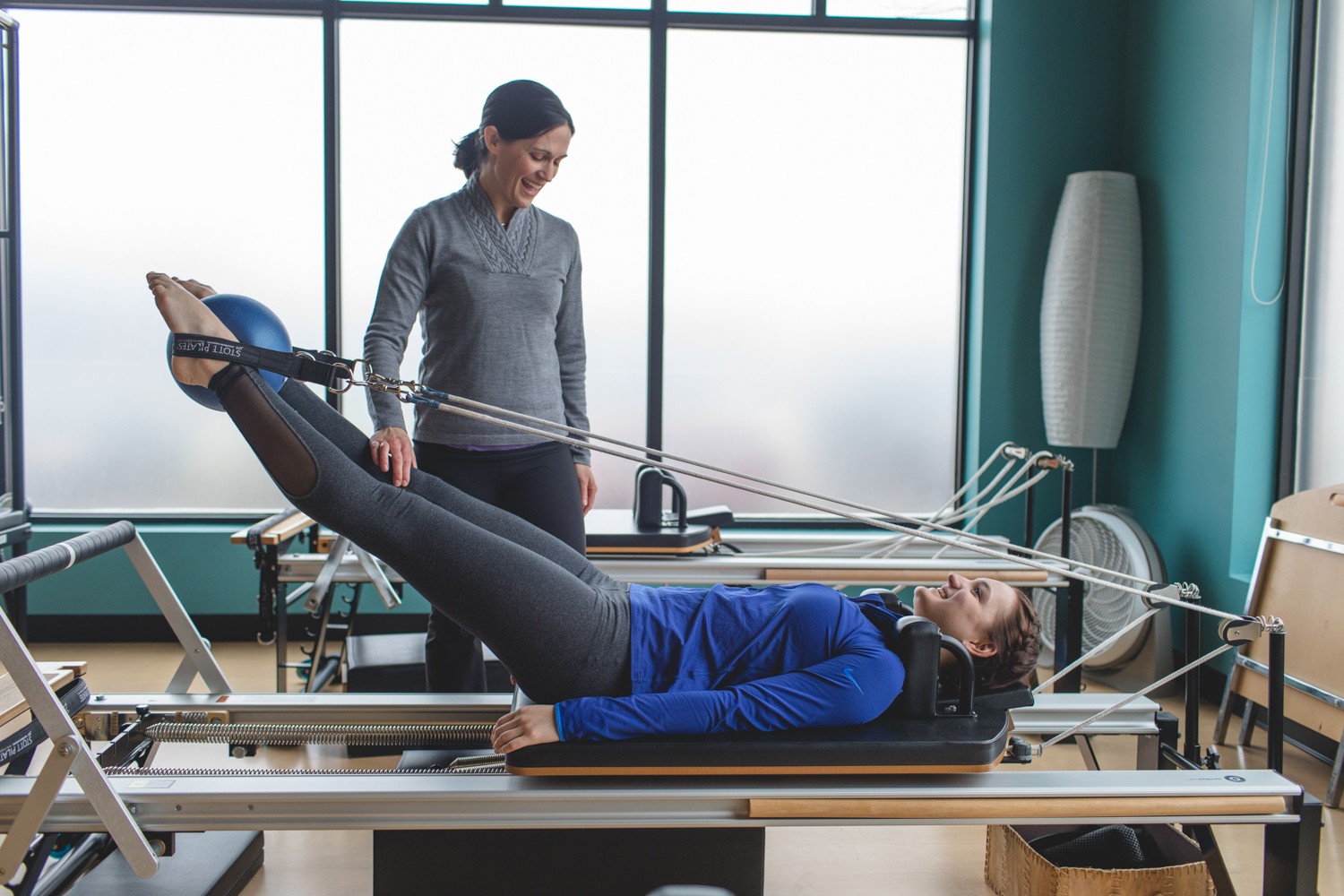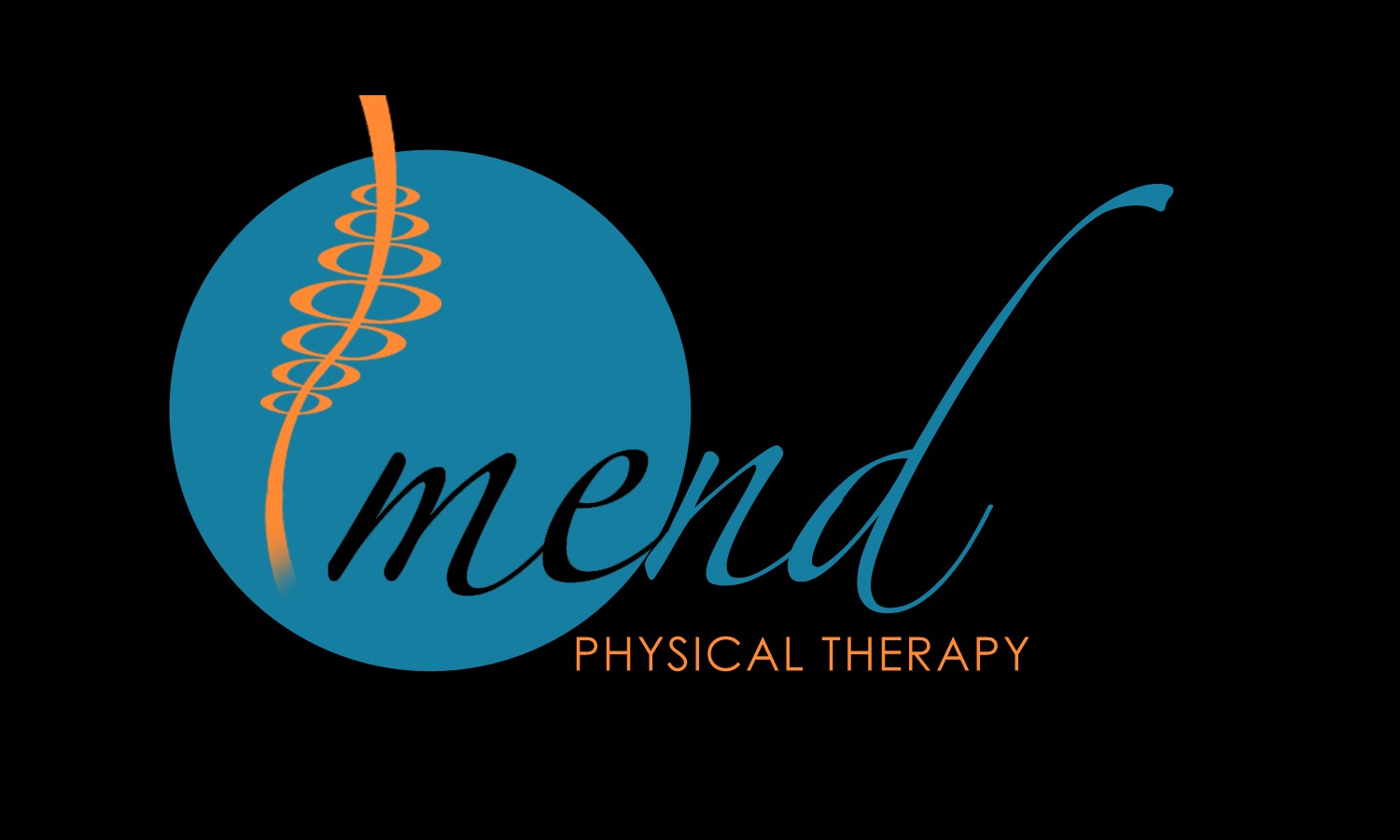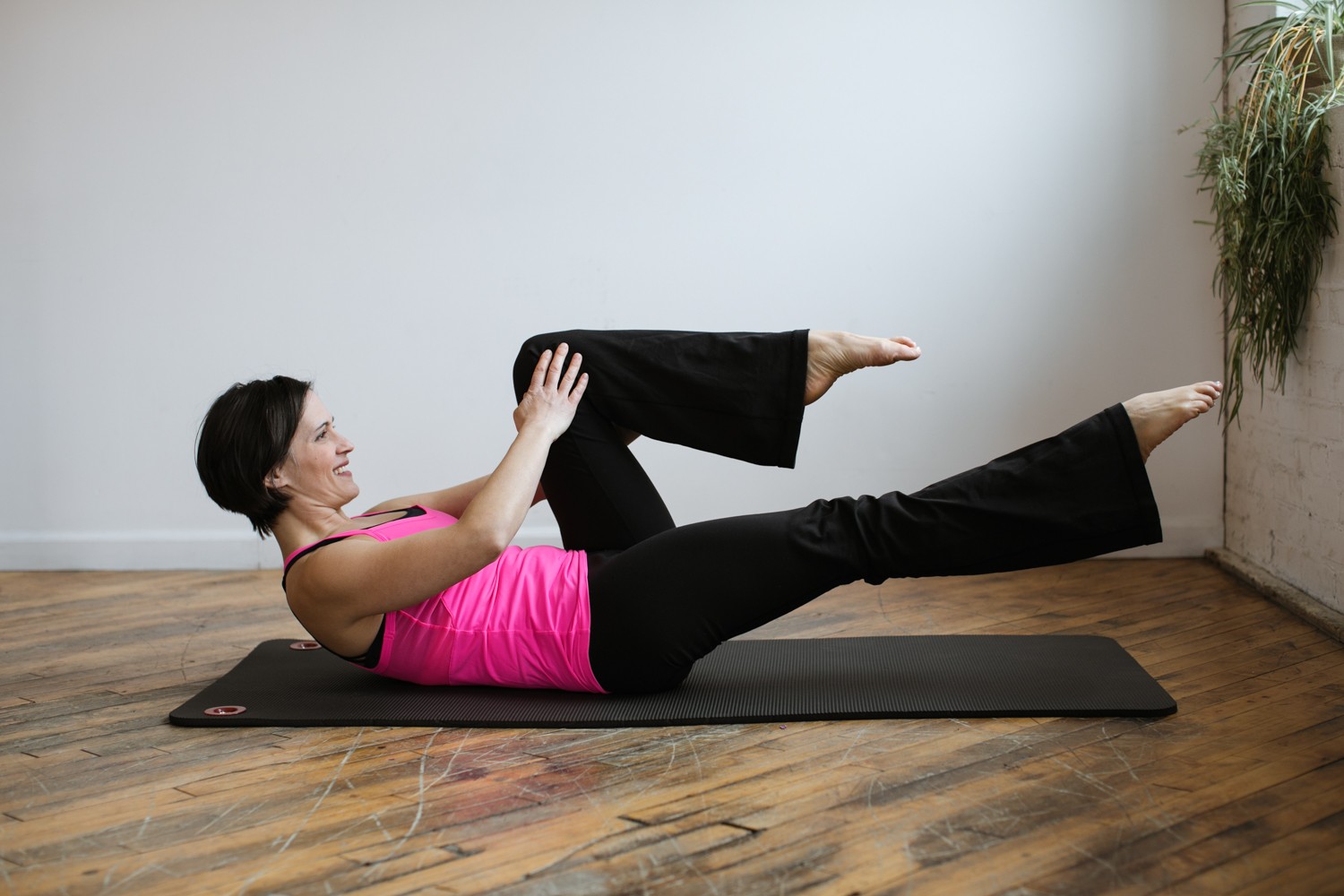We caught up with the brilliant and insightful Julie Simpson,DPT a few weeks ago and have shared our conversation below.
Julie, thanks for taking the time to share your stories with us today We’d love to hear about the things you feel your parents did right and how those things have impacted your career and life.
I grew up in a home where my parents started their own business when I was in elementary school. They both grew up in homes where their parents started a business or many different businesses and they were able to see first hand the hard work, grit and creativity that it took to start, work and grow a business. I think from this experience what I saw as a child was just hard work. I saw the yin and yang of business ownership: the hours of fatigue, the nights, the weekends and also I saw the spark that came from loving the work of helping the community in their own way, the joy of growing something from the ground up and the excitement of bringing a new idea to life. When I was in my late teens my dad very clearly said to me, ‘The key to starting a business is looking around to see where the need is. If there is a need then there is a business idea.’ My parents did many things right that contributed to my independence and drive, but from an entrepreneurial standpoint this is what I remember clearly.


Awesome – so before we get into the rest of our questions, can you briefly introduce yourself to our readers.
I am a physical therapist, although my clients will call me many other things in jest with a touch of truth (healer, counselor, therapist, insightful witch, priestess, magician to name a few) but by trade I am a physical therapist. I have a Bachelor’s in Science from Michigan State University and a Doctorate in Physical Therapy from University of Puget Sound. My path was not a direct path from undergrad to graduate school but not many paths are straight. Following graduate school I worked in an outpatient physical therapy clinic in Eugene, Oregon. At that clinic I worked with a few wonderful physical therapists and also took many continuing education classes where I learned to look at the body as a whole. Often times the problem that is screaming the loudest is really a symptom, but not the cause. After working in Oregon for a few years I made the decision to move back to Michigan to be closer to family. It was hard to leave the mountains and the ocean and a great clinic but it was the right choice. Once working in Michigan I quickly learned that insurance in Michigan really narrowed the ability to look at the body as a whole. Instead, if someone came to me with knee pain, insurance required that I treat the knee even if the problem was coming from a different location. This did not work for me at all. I quickly started brainstorming ways I could still do what I love. I started taking classes through Michigan State University’s School of Osteopathic Medicine continuing education program and I started working towards getting my rehab Stott Pilates Training. Both programs allowed me to look at the bodies I was treating as a whole and address the myriad of challenges each body faces. The osteopathic manipulative medicine helped me to treat the problems in the joints and soft tissue, and the Pilates approach helped me to integrate a full body strengthening program that was easily accessible to the body I was treating.
After receiving my Pilates Certification I started teaching Pilates at a small studio. To allow time to grow this skill I stopped working as an outpatient physical therapist and instead took a travel PT position that had more flexibility. It allowed me to work a little in the travel PT world while teaching Pilates and starting to develop what is now Mend Physical Therapy.
The constraints of the insurance world on treating clients in Michigan really allowed me to see a large need. This is what my parents always said; if there is a need, there is a business. The need was to treat the body as whole, to be able to look at a client, who walks in with knee pain, and look at them from head to toe. Often times there is so much more contributing to the problem than just knee pain. Additionally, patients wanted much more than just range of motion goals, often times they want to be the best version of their bodies so that they can continue to get down to the ground, play Pickle Ball or perform in the next weekend’s dance performance or soccer game. Thus Mend Physical Therapy was born. Mend Physical Therapy is cash pay or concierge physical therapy. I treat the body in front of me, not the insurance company. I work with the client’s goals to keep them doing what they love.
I was lucky enough to meet some wonderful people who really believed in me and allowed me to rent space and start Mend. While I was working for the Pilates studio it ended up closing, and another Pilates business was opening. There were two ladies who trusted me, my work and allowed me to rent space from their studio to start Mend Physical therapy, I also worked for them as a Pilates Trainer and still working on the side in travel PT. I grew my Physical Therapy business one client at a time, and over time it grew to the point where I needed to stop the travel PT work and eventually give up the Pilates trainer work.
At Mend Physical Therapy I treat clients as a whole, head to toe. YES, I do treat the head. We look at the problem and then peel back the layers that have caused the problems. After a thorough evaluation I use all of my skill sets to treat the client including the osteopathic manipulative medicine (OMM), neuromengial mobilization, functional exercises and strengthening and Pilates. I work with the client’s goals and then create a plan that does not follow your typical (2 times a week for 8 weeks) prescription. Instead I may only see them one time a week until we get them stable and then I like to taper our sessions off, giving the client more to do at home to help them reach their goals. We spend time breaking down the components of the client’s day or postures to help them better understand how to help themselves.
I treat many types of problems. I will see the client who wakes up suddenly and cannot turn their neck, or the soccer player whose knee hurts when he plays; your typical orthopedic issues. I also see a lot of back pain, neck pain, pain with numbness and tingling. I see very uncommon problems like shooting head pain, optic centers are off (pupils are not even which can happen after a concussion or a bad fall), Meniere’s Disease, vertigo, and headaches. I see people who have seen so many different practitioners they just want someone to look at everything they are doing for exercise and distill it down to what will work for them. I see clients who want a physical therapist to work with their trainers or yoga instructors or massage therapists because they really want a team approach.
In my years of practice, I found that some people want to know what to do and they are quick to do it themselves, others want an accountability partner and others want more guided exercises. To help those who were needing more for home I developed Mend at Home. It is a subscription service that offers videos ranging from 5 minutes to 25 minutes in length to help various areas of pain, stiffness, or weakness. Users can log on as frequently as they like and follow along in the videos to help their pain or areas of weakness. Unlike your typical workout video, it walks you through gentle stretching, self mobilization and strengthening exercises in a specific order to help you unwind your areas of discomfort and then stabilize using the smaller, deeper stabilization muscles for a stronger body. These are exercise series I have used in the studio to help my clients for years.
Mend at Home is accessible anywhere, whether you are traveling and you start feeling that low back stiffness we all know so well, or from home after you shop for hours and need something to help you get ahead of that body pain. This program has helped people who are current clients and those who I have never treated before. Mend at Home has helped to fill another level of need.


What’s been the most effective strategy for growing your clientele?
Call me old fashioned or even cliché, but the best strategy for growing your clientele is actually caring about your clients and their outcomes. In a world where we have moved from face to face interactions, talking to each other via text or intake forms and to a profit-based model people are feeling unheard and uncared for. On repeat, clients come in and tell me, ‘no one has actually listened to my story’, ‘no has explained my pain to me’, ‘no one has helped me to understand the why’. But in order to be successful in helping someone feel better and reach their goals I need to listen to their story, to what happened when their pain or disfunction started. I don’t need to take their pain on as many end up doing in healthcare but I do need to understand the person, what drives them and what drives their pain. Then I need to be good at the service I provide (or as some say my craft) and leave the client with tools that they can use to help themselves. When someone leaves your presence or business they need to be heard and have tools for the next steps. They may not always feels better, as there are times this is not possible, but when people understand the ‘why’ or what they can do next, they feel empowered and not hopeless.
This interaction is so rare in our world that we live in. When people have these positive experiences they talk, they tell their friends, their family, their coworkers and thus your business grows.


We often hear about learning lessons – but just as important is unlearning lessons. Have you ever had to unlearn a lesson?
When one comes out of graduate school you have a very basic set of skills and so what you lack in hard, solid skills you make up for with heart; ie caring more, pouring more into each patient, taking everything on that your patient may bring through the door. We were taught compassion, ethics and bedside manner in school. These are all very important skills. But as is the case with many in the healthcare field or the wellness field you fatigue, you burnout from so much caring.
If you work in the wellness field or the health care field you have most likely treated someone with shoulder pain and then later that day or week your shoulder hurts. Or someone walks into your clinic space and gives you their gut wrenching life story and for the rest of the day you can’t shake the sadness. This happens to many of us. We, as health care providers, show up with full heart, willing to give our everything to help our clients and as a result we leave ourselves wide open to take on everything the client gives off from a sore shoulder or a sad, anxious day.
So as time went on and as my skills began to grow through experience and continuing education and my fatigue level increased, bringing home my clients worries, sadness or pains I had to figure out how to protect myself on a daily basis. I had to unlearn giving all my heart. I had to learn boundaries. Now boundaries is the buzz word of the decade and there is something to be said for learning boundaries about how often you check your email or return a text or check your social status but I am not talking about those kind of boundaries. I had to learn where my energy boundary ended, and to stop my patient’s energy from undoing my boundary or getting stuck on me and impacting the rest of my day or week. I had to learn how to genuinely care, listen, and treat the patient without coming home with shoulder pain or their trauma.
I learned metaphysical boundaries from my elders, from friends in the field who were much more experienced than I and from a few key mentors. I learned the ways I could every day, hour or minute create the space where my body or energy body ended and where the patient’s energy started. I learned how I could mentally clear their sadness from my area when they left my space in a few seconds before my next client walked through the door. I learned how I could still care, but not give my entire heart and take on everything they were holding.
Contact Info:
- Website: https://www.mendthebody.com/
- Instagram: @mendphysicaltherapy
- Facebook: https://www.facebook.com/Mendphysicaltherapy
- Other: https://mendphysicaltherapy.vhx.tv/
Image Credits
Elise Kutt, Mod Bettie Portraits


